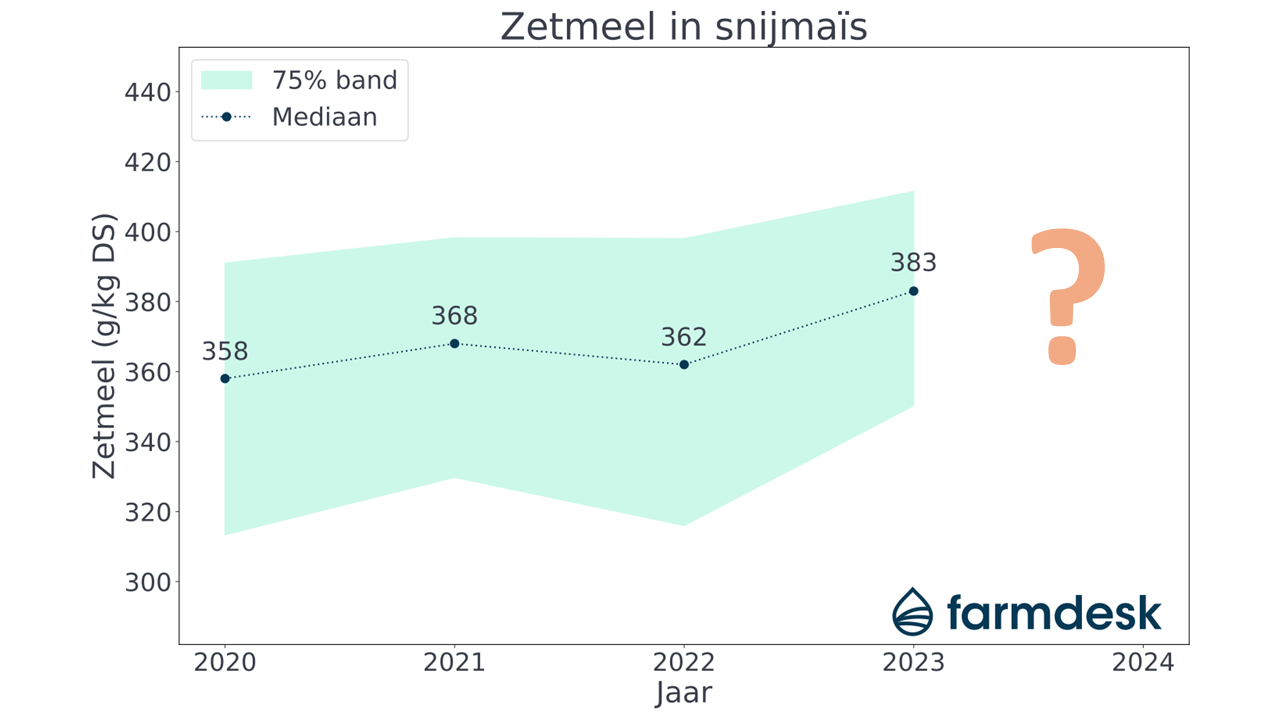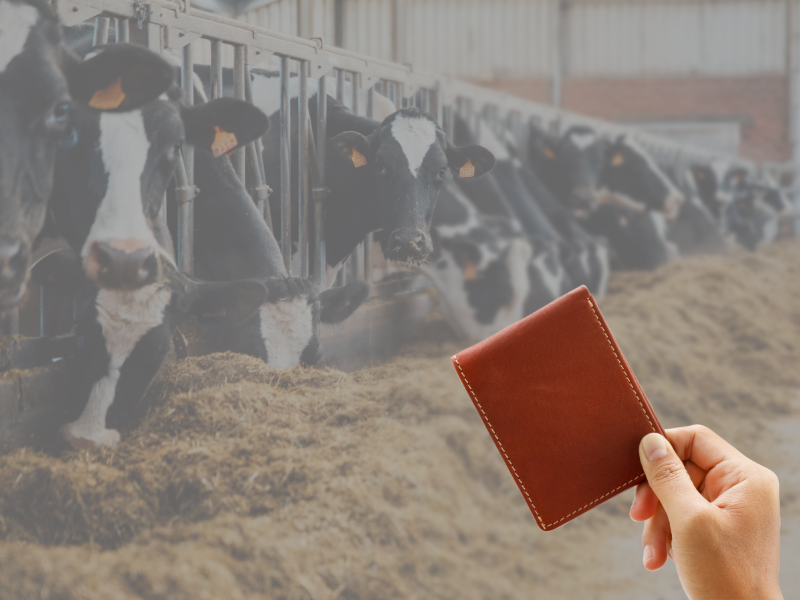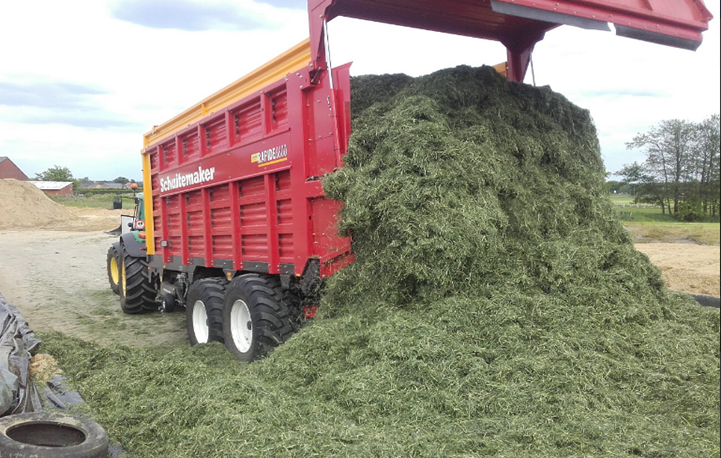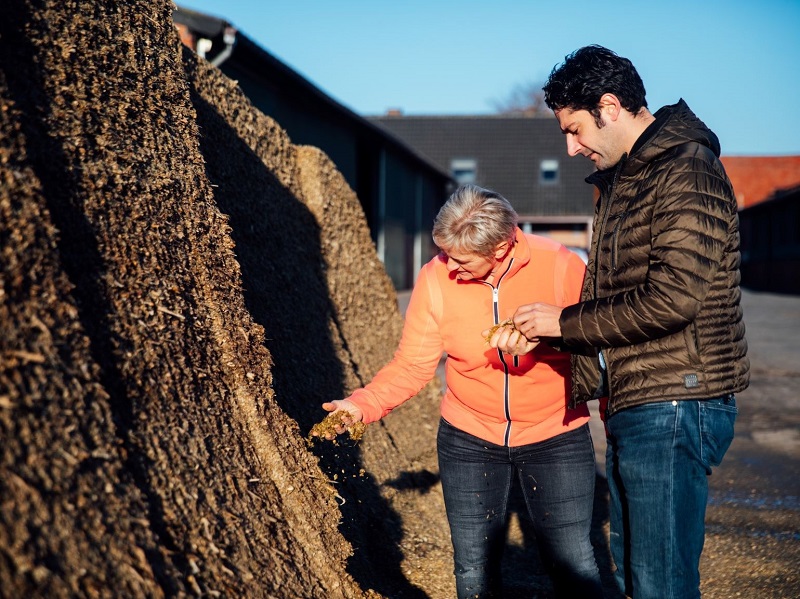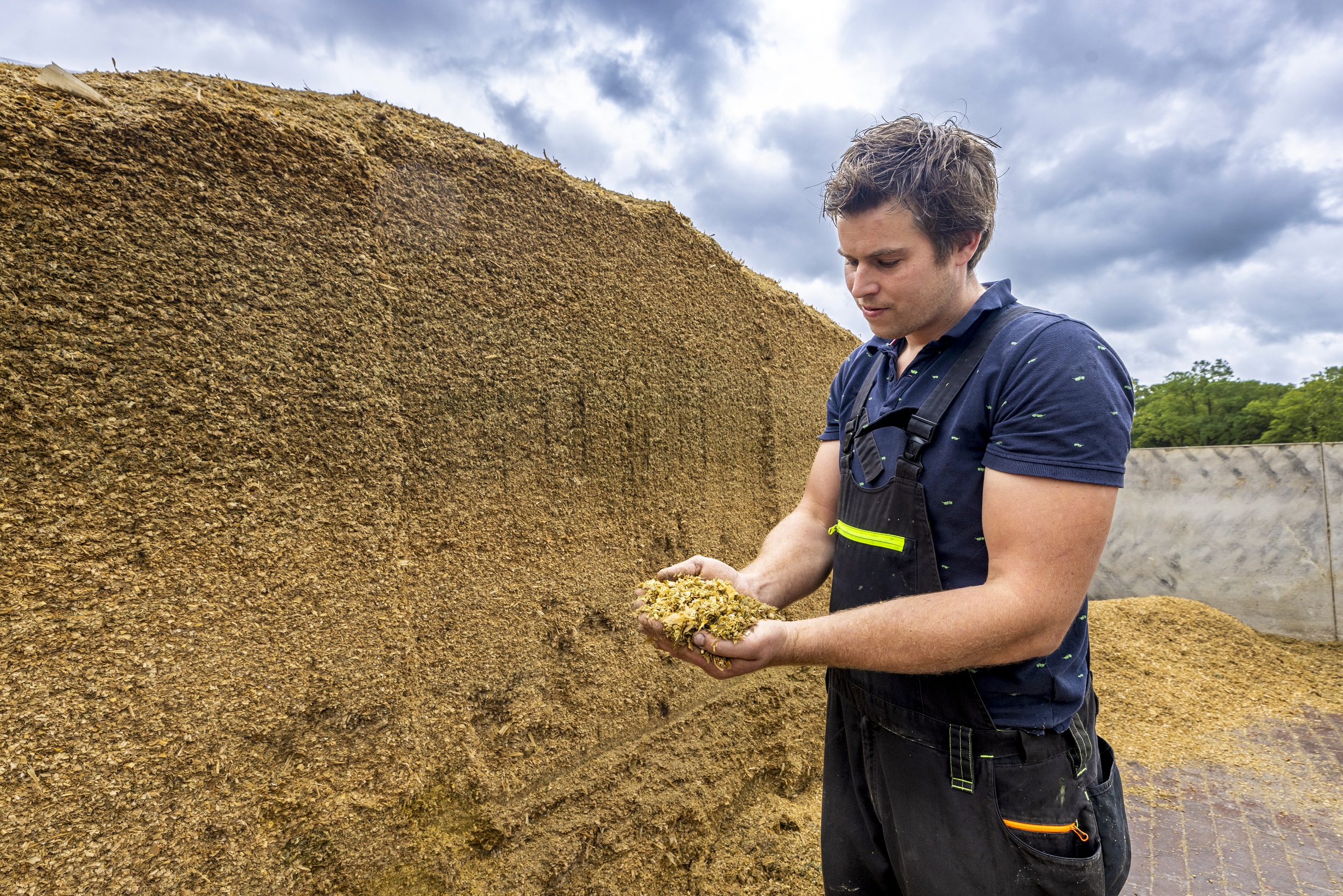Farmdesk's economy module recently received a strong expansion, developing and visualizing a whole set of performance indicators. More info on these performance indicators can be found in this article.
After statistically analyzing the various indicators of Farmdesk companies over the past few months (April through July), we came up with numerous fascinating insights. In a multipart series of articles, we are happy to share these insights with you.
In this first article, we focus on milk production and associated efficiency (in terms of feed and protein).
In comparing farms, we plot the performance indicators against the feed profit at the same milk price per cow, measured at a milk price of €32.11 per 100 kg of measured milk. For a Flemish dairy farmer, this amounts to a milk price of €33.27 per 100 liters (at 42 g/L fat and 34 g/L protein). For a Dutch company this is a milk price of € 35 per 100 kg of milk (at 4.42% fat and 3.57% protein).
By assuming an equal milk price, the effect of different milk prices among dairy collectors is eliminated and the focus is on the techno-economic performance of the farms.
From our analysis of data from the past few months, it became clear that animal day production (kg of measured milk per animal per day) plays a very large role in achieving a high feed profit per cow at the same milk price. This is also clearly visible in the figure below.
The figure below shows the groups FD-below (25% livestock farmers with lowest feed gains) , FD-mid (25-75%) and FD-top (75-100%), as well as the averages of each group (the black crosses). The distribution cloud gives more insight into the trend of the measurements.
Thus, on average, high feed profits here are clearly linked to high milk production.
So putting productivity first is the message that can be given here.
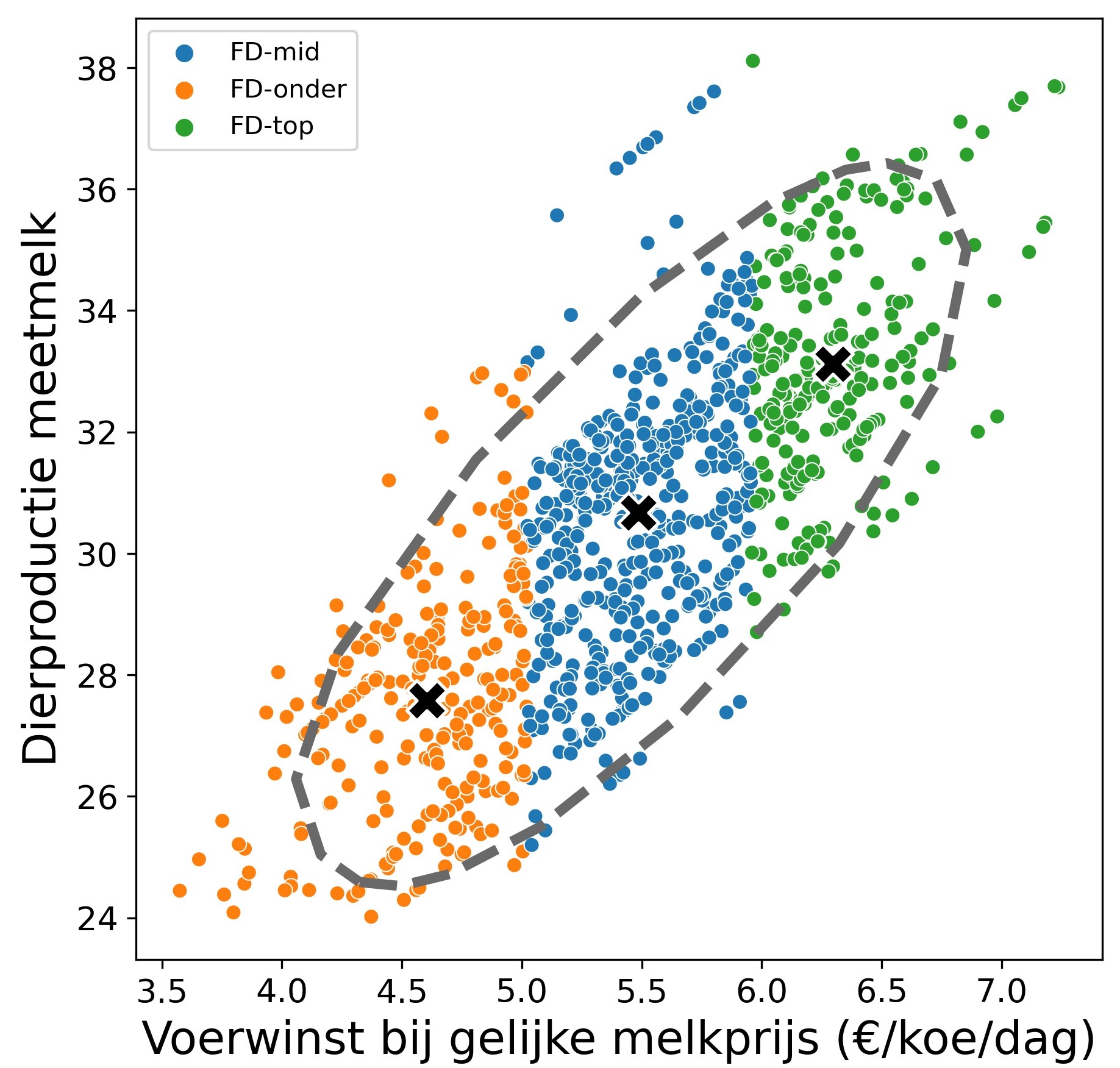
Furthermore, focusing on feed efficiency (the measured milk production per kg DS feed intake) and protein efficiency (grams of milk protein produced per gram of feed protein ingested) appears to pay off very well. The figures below show a positive relationship between efficiency parameters and feed gains per cow.
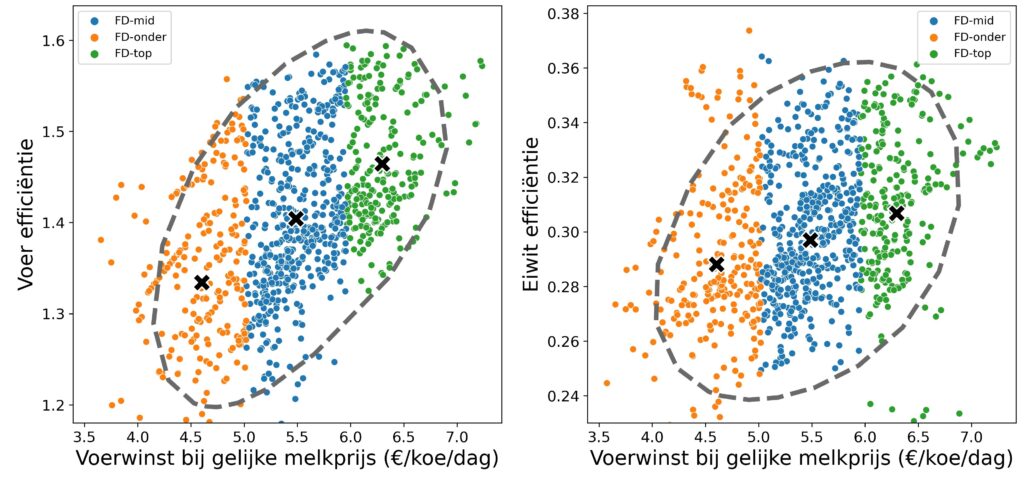
So the challenge is to usebalancing rations to encourage cows to maximize milk production.
Weight gain and/or weight loss of animals are always to be avoided in this process because it is associated with losses in efficiency. If animals use the energy from the feed to body growth, this energy is no longer available for milk production. This will reduce feed efficiency, resulting in lower feed profits.
In the case of weight loss the animals will use the protein less efficiently. Since in this case body reserves (in the form of muscle protein) are tapped for milk production rather than directly from feed protein.
In addition, it is also important to optimize the protein content in the ration to work on sufficient milk production without too many losses. (Too) feeding too much protein will lead to high milk production but a also to lower protein efficiency. This lower efficiency will then in turn give rise to lower feed profits at the same milk price (as is clear from the figure above). So the message is to be as economical as possible with protein, but also not to feed too little protein.
In the next article in this series, we will focus on the business implications of the choice of feed materials.


